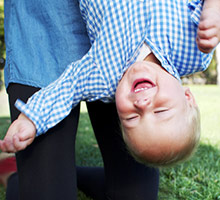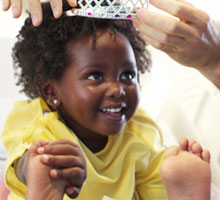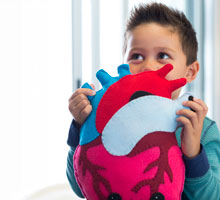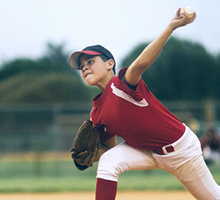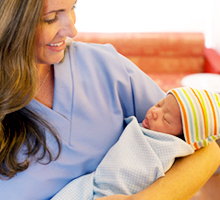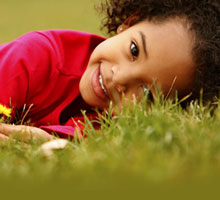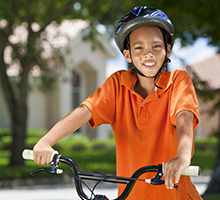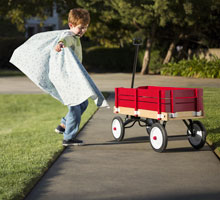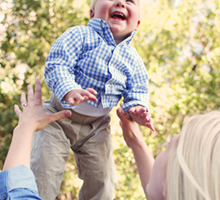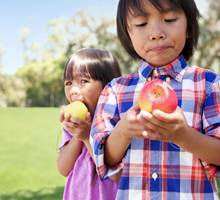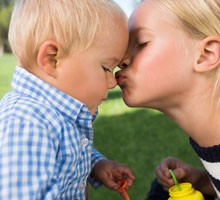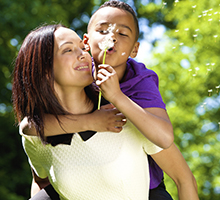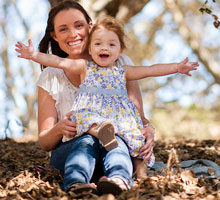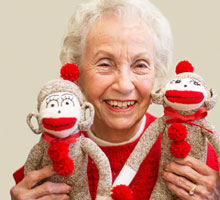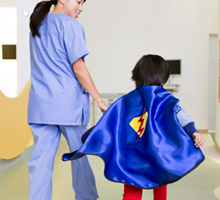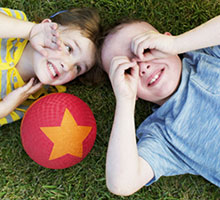Kohl's Falls Safety

Falls are the leading cause of unintentional injury for all children ages 14 and under. Since 1999, an average of 100 children ages 14 and under have died from fall-related injuries annually. Each year window falls account for approximately 8 deaths and 3,300 injuries among children ages 5 and under.
Falls Prevention Tips
Prevent window falls
- Install window guards to prevent children from falling out of windows. For windows above the first floor, install window guards with an emergency release device in case of fire.
- Install window stops so that windows open no more than four inches.
- Keep windows locked and closed when they are not being used.
- Keep furniture away from windows so kids cannot climb to the ledge.
- If you have double-hung windows — the kind that can open down from the top as well as up from the bottom — it is generally safer to open the top pane, but growing kids may have enough strength, dexterity and curiosity to open the bottom pane.
- Do not rely on window screens to prevent falls.
- Keep windows locked when they are closed.
- Supervise children at all times, especially around open windows.
- Never try to move a child who appears to be seriously injured after a fall — call 911 and let trained medical personnel move the child with proper precautions.
Keep babies and young children safe by strapping them into seats or carriers and using stationary play centers.
- Never leave young children unattended on changing tables, beds, couches or other furniture.
- Always strap children when using high chairs, infant carriers, swings and strollers.
- Place baby carriers on the floor, not on top of a table or other furniture.
- Never use baby walkers on wheels. Stationary play centers give your baby a chance to practice standing and moving in an upright position without going anywhere and getting into dangerous situations. Look for one that is on a stable, non-moveable base and place it away from stairs, hot appliances and window blind or drapery cords, if you have these.
Playground equipment should be kept in good repair and securely anchored above a soft surface.
- Recommended surface materials include sand, pea gravel, wood chips, mulch and shredded rubber. Rubber mats, synthetic turf and other artificial materials are also safe surfaces and require less maintenance.
- Avoid playgrounds with asphalt, concrete, grass, dirt and soil surfaces under the equipment. A fall onto a shock absorbing surface is less likely to cause a serious injury than a fall onto a hard surface.
- Surfacing should be at least 12 inches deep and extend at least 6 feet in all directions around stationary equipment. Depending on the height of the equipment, surfacing may need to extend farther than 6 feet.
- For swings, make sure that the surfacing extends, in the back and front, twice the height of the suspending bar, so if the top of the swing set is 10 feet high, the surfacing should extend 20 feet.
Use of appropriate safety equipment is essential.
- Children should always wear activity-specific, properly fitting safety gear when participating in recreational activities.
Prevent furniture tip overs.
- If a piece of furniture is unstable or top-heavy, secure it to a stud in the wall using brackets, braces, anchors or wall straps. Large items such as TVs, microwaves, fish tanks, bookcases, heavy furniture and appliances can topple off stands and fall on children.
- If possible, use a stand specifically designed for your TV as recommended by the manufacturer or place your TV on sturdy furniture appropriate for its size. Make sure both the stand and TV are properly secured to the wall and push your TV as far back on the stand as possible, out of your child's reach.
- If you have a newer, flat screen TV, make sure it is properly anchored to the wall.
- Read the manufacturer’s instructions for tips or warnings regarding placement of your TV or furniture.
- Keep heavier items on lower shelves or in lower drawers.
- Tie up loose cords, as a child pulling on an electrical cord, or tripping on one, could pull an appliance off a stand.
- Do not keep remote controls, candy, toys or other items that attract children on top of furniture, as your child might be enticed to reach for these items.
When taking your children to the grocery store, take these steps to prevent shopping cart falls:
- Put your child in a stroller, wagon, or front pack instead of in a shopping cart.
- Ask your older child to walk and praise him or her for behaving and staying near you.
- Use the shopping carts that have a wheeled child carrier that is permanently attached and made part of the shopping cart. Some of these models look like cars or benches attached to the shopping cart.
- If you are placing your child in the shopping cart seat, always use a harness or safety belt to restrain your child. If the belt is missing or broken, select another cart and tell the store manager so a replacement can be installed.
- Never leave your child alone or unattended in a shopping cart and stay close to the cart at all times.
- Do not let your child ride in the cart basket, under the basket, on the sides or on the front of the cart. Do not let an older child push the cart with another younger child in it.
- Never place an infant carrier on top of a shopping cart.
Take these basic precautions to help prevent falls around the home:
- Use non-slip rugs on the floor and mats or decals in the bathtub or shower.
- Keep hallways and stairs well-lit and clear of clutter.
- Never let children play on high porches, decks, stairs or balconies.
- Safety gates at the tops of stairs must be attached to the wall, as these are more secure than the kind held in place by outward pressure. Use safety gates that meet current safety standards to avoid entrapment and other hazards.
Download the Home Safety Fact Sheet.



